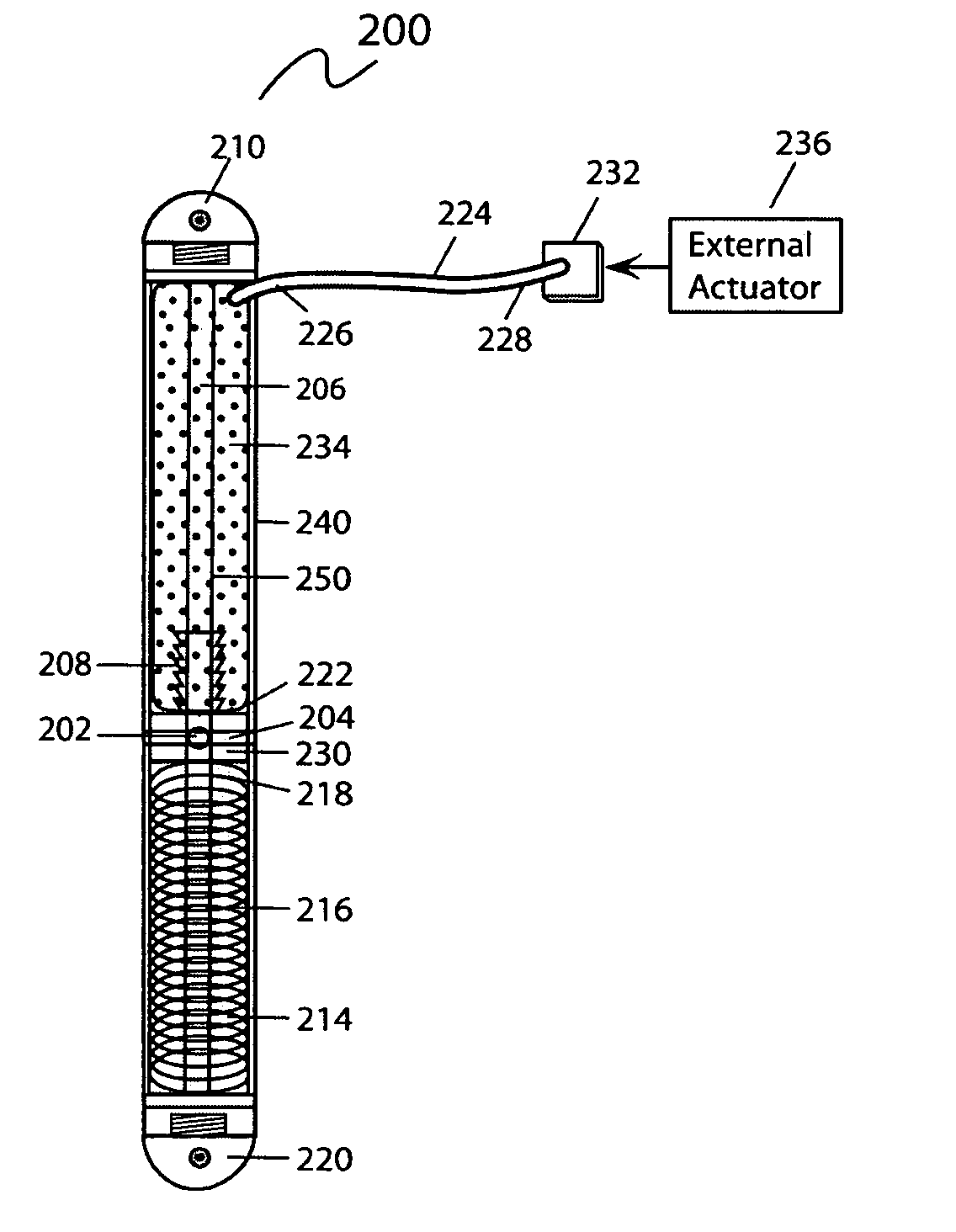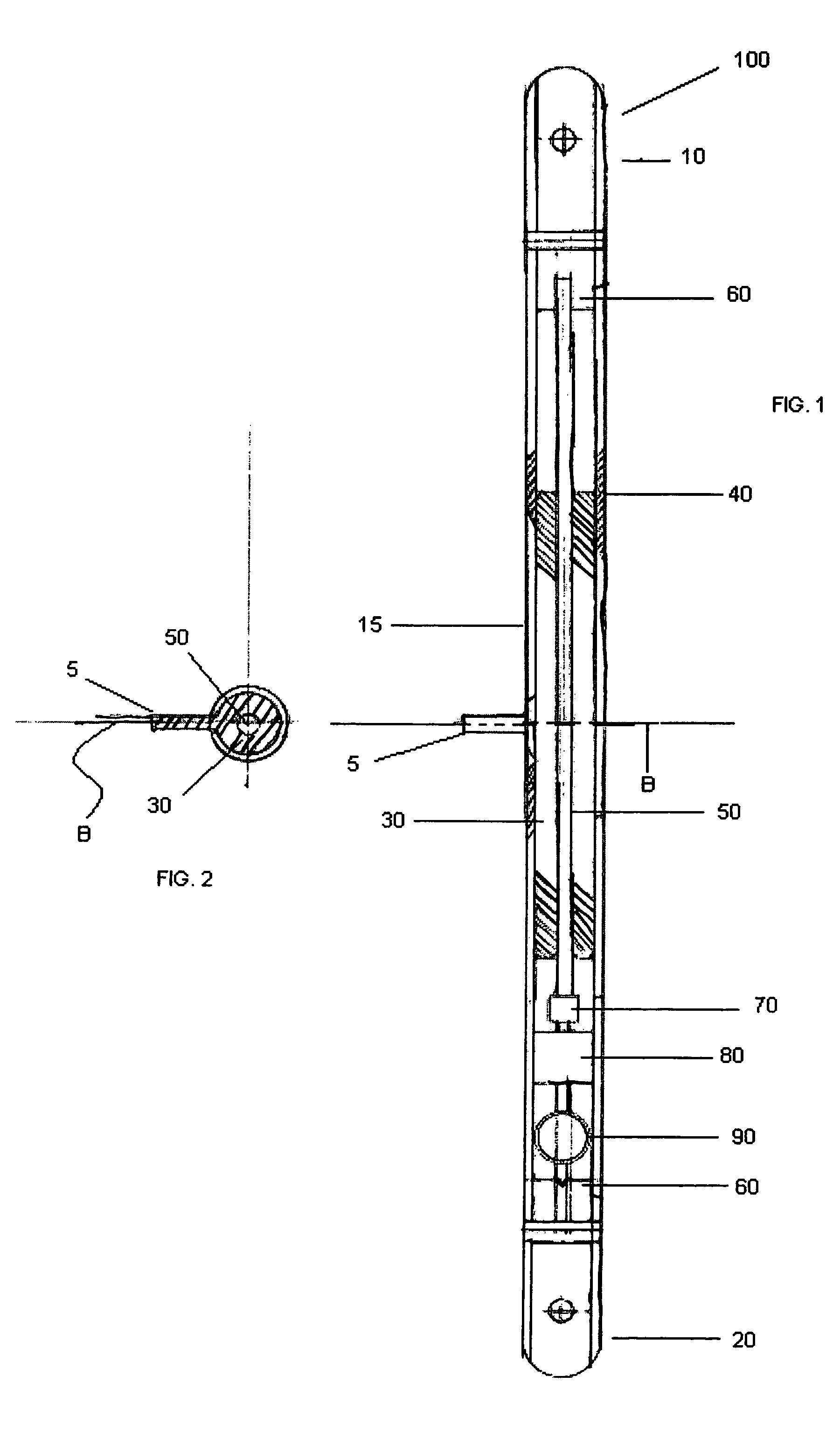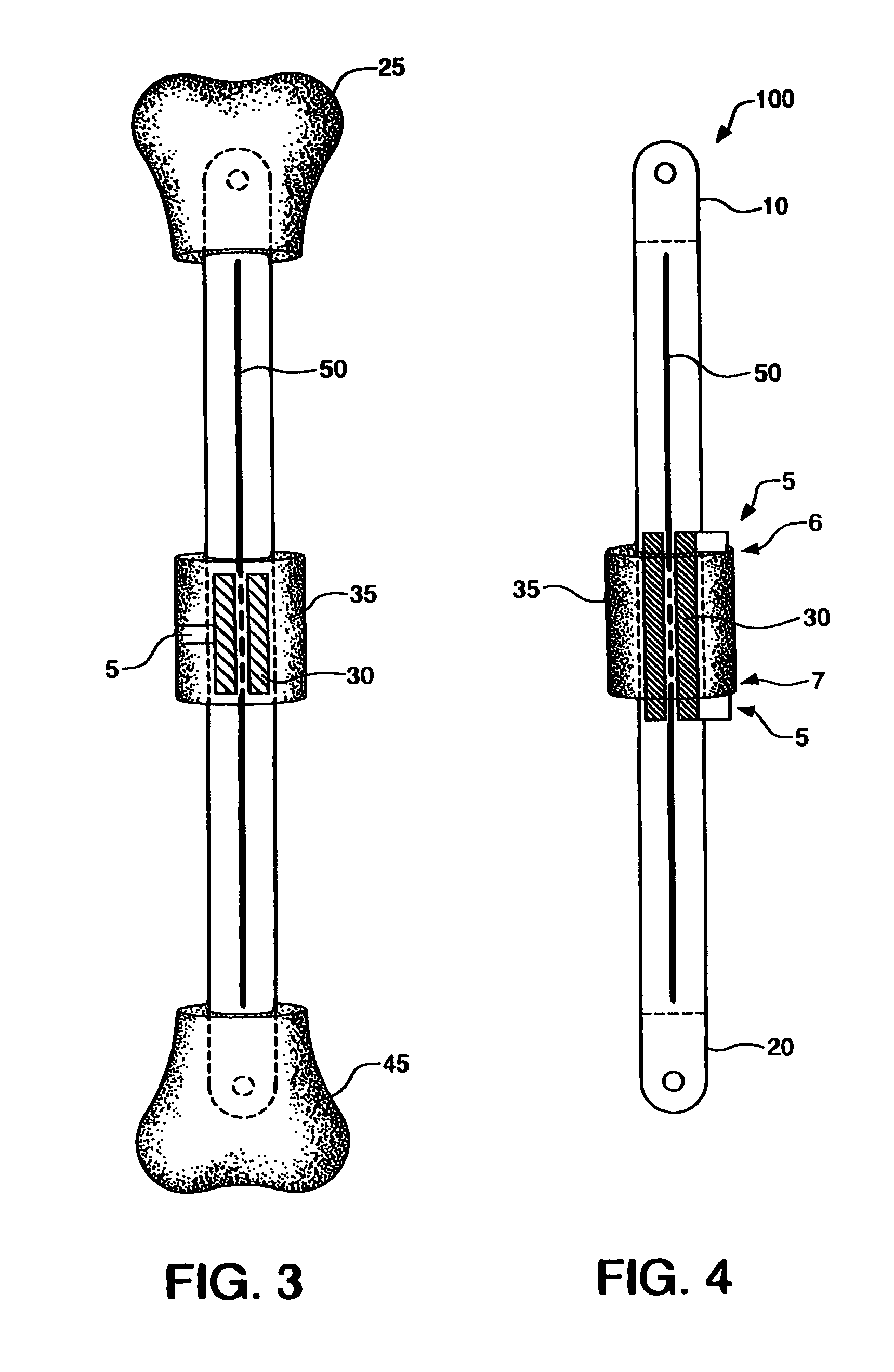Internal bone transport
a bone grafting and internal bone technology, applied in the field of orthopedic devices, can solve the problems of increased blood loss, pain, surgical scarring, and difficulty or inability to obtain the optimal volume of autogenous bone, and achieve the effect of reducing the volume of fluid
- Summary
- Abstract
- Description
- Claims
- Application Information
AI Technical Summary
Benefits of technology
Problems solved by technology
Method used
Image
Examples
Embodiment Construction
[0029]Reference will now be made in detail to embodiments of the invention, examples of which are illustrated in the accompanying drawings. While the invention will be described in conjunction with the embodiments, it will be understood that they are not intended to limit the invention to those embodiments. On the contrary, the invention is intended to cover alternatives, modifications, and equivalents, which may be included within the spirit and scope of the invention as defined by the appended claims.
[0030]According to an embodiment illustrated in FIG. 1, the internal bone transport (100) has an external rod or tube (herein collectively “external rod”) (40) having a first end (10) and second end (20). The first end (10) and second end (20) are capable of being coupled with a bone. The first end (10) and second end (20) may be coupled with a bone by methods known in the art, including but not limited to screws, pins, cement, and / or glue. Preferably, the first end (10) and the secon...
PUM
 Login to View More
Login to View More Abstract
Description
Claims
Application Information
 Login to View More
Login to View More - R&D
- Intellectual Property
- Life Sciences
- Materials
- Tech Scout
- Unparalleled Data Quality
- Higher Quality Content
- 60% Fewer Hallucinations
Browse by: Latest US Patents, China's latest patents, Technical Efficacy Thesaurus, Application Domain, Technology Topic, Popular Technical Reports.
© 2025 PatSnap. All rights reserved.Legal|Privacy policy|Modern Slavery Act Transparency Statement|Sitemap|About US| Contact US: help@patsnap.com



